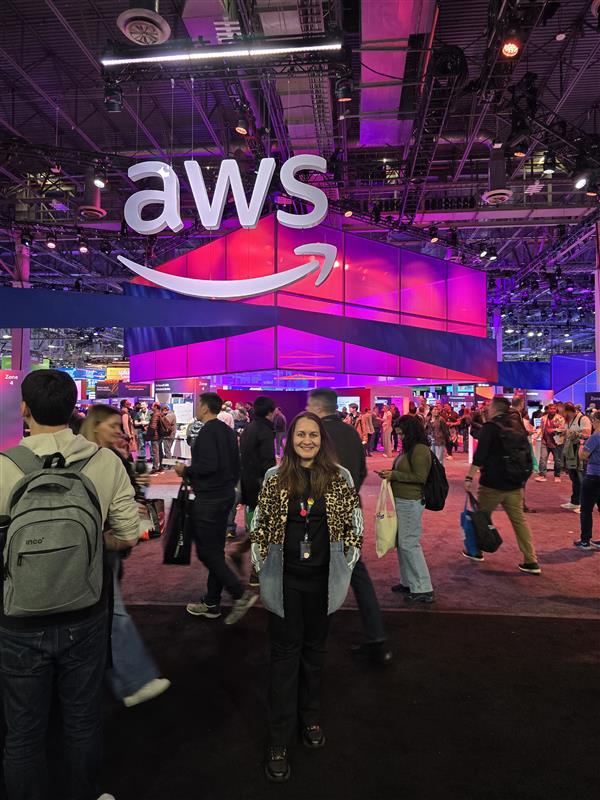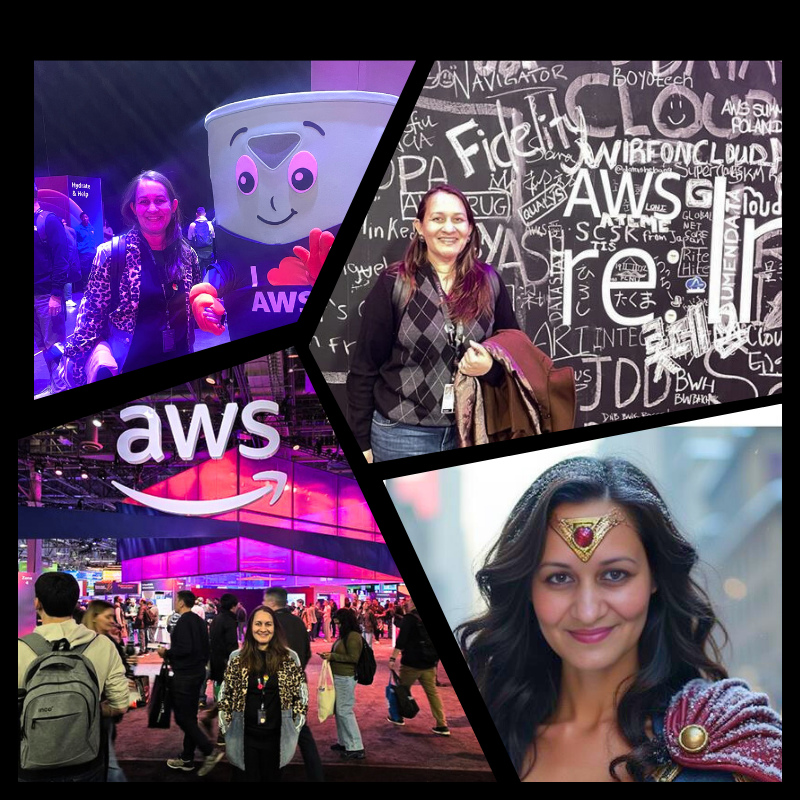Walking through the vibrant halls of AWS re:Invent 2024 in Las Vegas, where over 50,000 technology professionals converge annually, one thing became crystal clear: the landscape of tech event marketing has fundamentally transformed. This gathering, which has grown from a modest conference in 2012 to become one of the world’s largest cloud computing events, now features more than 2,000 technical sessions and workshops across five days, with over 300 AWS partners and technology providers showcasing their innovations. The sheer scale of this event, spread across multiple venues on the Las Vegas Strip, represents a microcosm of the entire tech ecosystem. As a marketing consultant who spent several days immersed in this premier tech gathering, I observed not just what was happening on the surface, but the deeper strategic currents that separate successful partner marketing from merely showing up.
For any organization considering partner marketing in the tech space, understanding the dynamics of an event of this magnitude is crucial. With thousands of technical sessions ranging from foundational workshops to advanced certification courses, and hundreds of partners vying for attention, the challenge isn’t just about being present – it’s about being strategically visible in an ocean of innovation.
The Changing Landscape of Tech Event Marketing
The traditional approach of securing a booth space and hoping for the best is decidedly outdated. At re:Invent 2024, successful exhibitors demonstrated a sophisticated understanding of modern event marketing. What stood out was the laser-focused approach: booths that concentrated on solving a single, specific challenge garnered significantly more engagement than those attempting to be everything to everyone. In fact, the most crowded spaces weren’t necessarily the largest – they were the ones that told the most compelling, focused stories.
Understanding Your Real Audience
One of the most valuable insights from re:Invent came from over 40 conversations with attendees across different spaces – from networking areas to session rooms and lunch spots. Through these interactions, I identified four distinct attendee groups, each with their own specific objectives and motivations:
- Engineers, Developers, and Tech Enthusiast Community
This group comes with clear, technical objectives:
– Learning more about AWS tools and their applications
– Getting certified and upgrading their AWS skills
– Exploring trending technology solutions
– Getting hands-on experience with technology tools and products
– Engaging with the community and collecting unique swag
- AWS Partners
These attendees focus on ecosystem integration:
– Exploring the AWS landscape and its potential
– Engaging with AWS Account, Engagement, and Partner Managers
– Meeting potential buyers
– Creating brand visibility through booth participation
- Large Technology Players
These industry giants have strategic objectives:
– Testing their LLM models in a real-world environment
– Generating buzz and being part of the conversation
– Strengthening partner relations
– Allocating their marketing and partnership budgets effectively
- Industry Leaders and Potential Buyers
These decision-makers have broader goals:
– Participating as speakers or panelists
– Exploring tools and solutions from a general perspective rather than addressing specific business challenges
– Influencing decisions within their organizations
– Building their personal brand through LinkedIn and other platforms
Here’s the crucial insight many miss: unless specific meetings are pre-arranged, very few attendees are actively seeking new partnership opportunities. This understanding should fundamentally reshape how companies approach their event strategy.
The New ROI Metrics for Event Marketing
Traditional event ROI metrics often focus on lead generation, but re:Invent 2024 revealed more sophisticated success indicators. Based on extensive observation and analysis, here are the three key metrics that truly matter for measuring event success:
- Partner Brand Visibility with the Representatives
This metric proves particularly valuable because:
-The event provides unique opportunities to showcase solutions to AWS partner managers in tangible formats
-AWS partner managers and community members are actively engaged and ready to connect
-Exhibitors can create specialized collateral with high recall specifically for partner audiences
-Face-to-face demonstrations create lasting impressions that digital marketing cannot replicate
- Brand Community Growth
This emerges as the biggest achievement potential for exhibitors because:
-The three-day average attendance creates perfect conditions for meaningful community engagement
-Companies can showcase areas of their business that leverage community interaction
-Engagement can be learning-focused or fun-focused, depending on the target audience
-Developer and tech enthusiast communities are particularly receptive during the event
-The platform allows for organic community building in a professional context
- AI Solution Testing
The event proves to be an excellent prototype testing ground because:
-Visitors understand the technology space and are willing to spend time engaging with prototypes
-The diverse participant base provides varied feedback for different use cases
-Technical sophistication of attendees leads to quality feedback
-The environment allows for immediate iterations and adjustments based on user interaction
-Companies can gather real-world usage data in a controlled setting
These metrics shift the focus from traditional lead counting to more sustainable, long-term measures of success. Companies that aligned their event strategy with these metrics generally saw more meaningful engagement and lasting impact from their presence at re:Invent.
Beyond the Booth: Alternative Engagement Approaches
My observations suggest that the most effective partner marketing strategies often bypass traditional booth presence entirely. Executive Round Tables and targeted Happy Hour events often yield better returns on investment. These formats create more intimate settings for meaningful conversations with decision-makers who might otherwise be lost in the general event traffic.
For companies specifically seeking meetings with AWS Account Managers or potential leads, the data suggests that full event participation isn’t always necessary. Strategic presence during specific networking events or targeted sessions can be equally effective at a fraction of the cost.

Modern Partner Marketing: A New Paradigm
The landscape of partner marketing at major tech events has undergone a fundamental transformation. Through our observations at re:Invent 2024, it became clear that successful partner marketing now requires a sophisticated blend of creativity, strategic gamification, and deep audience understanding. The most successful companies demonstrated that modern event marketing is no longer about product displays or feature presentations – it’s about creating immersive experiences that resonate with specific audience segments while delivering meaningful business value.
This new approach requires organizations to think differently about their event presence. The integration of creative elements and gamified experiences isn’t just an enhancement to traditional marketing – it represents a complete paradigm shift in how companies engage with their target audiences at major tech events. We observed that companies who embraced this transformation not only attracted more visitors but also generated more meaningful interactions and lasting relationships.
The Power of Gamified Engagement
Throughout re:Invent 2024, one of the most striking trends was the sophisticated use of gamification to transform technical conversations into memorable experiences. This wasn’t merely about adding game elements for entertainment; rather, it represented a strategic approach to making complex technical concepts more approachable and engaging.
Strategic Integration with Core Messaging
– Games and puzzles directly aligned with product value propositions
– Interactive elements served as metaphors for technical concepts
Innovative Engagement Formats
– Treasure hunt experiences demonstrating data discovery features
– LEGO block activities visualizing cloud architecture concepts
– Magic shows illustrating technology transformation
– Time machine concepts showing solution evolution
– Interactive puzzles highlighting product functionality
The success of gamified implementations hinges on several interconnected factors that must work in harmony. At its foundation, the strategic placement of interactive elements within the booth space serves as the crucial first step, creating natural flow patterns that guide visitors through the experience. This spatial strategy is complemented by well-trained staff who understand not just the mechanics of the games but, more importantly, how to smoothly connect these engaging activities to meaningful business value discussions. The progression from initial engagement to product discussion needs to feel natural and unforced, requiring careful attention to the balance between entertainment and educational value. Throughout the experience, maintaining consistent measurable engagement metrics for each activity allows teams to refine and optimize their approach in real-time, ensuring that every interaction contributes meaningfully to broader marketing objectives.
The Creative Imperative in Modern Event Marketing
The evolution of tech events has fundamentally changed what constitutes an effective booth presence. Creativity has shifted from being a differentiator to becoming a baseline expectation, demanding a complete rethinking of event participation strategy.
Market Context and Challenges
– Increasingly competitive attention economy at tech events
– Need for unique in-person value propositions
Successful Implementation Strategies
– Integration of spatial design with brand messaging
– Innovative presentation formats and timing
Planning and Investment Considerations
– Early investment in conceptual development
– Focus on creating organic attendee experiences
– Shift from product demonstrations to narrative experiences
Measuring success in this new creative paradigm requires a comprehensive approach to metrics and outcomes. The foundation begins with tracking enhanced engagement quality through sophisticated monitoring of visitor interactions and conversation depth. This connects directly to booth dwell time, which proves particularly revealing when analyzed alongside the quality of interactions with target audiences. Beyond immediate metrics, successful companies are finding ways to measure improvements in brand recall through post-event surveys and follow-up conversations. Perhaps most significantly, they’re developing frameworks to track the development of long-term relationships that emerge from these creative engagements, understanding that the true value of creative event marketing often manifests in the months following the event through strengthened partnerships and expanded business opportunities.
Get It Right
As your organization considers its partner marketing strategy, particularly in the context of major tech events like re:Invent, the key is to start with clear objectives and work backward. Whether it’s building community engagement, testing new solutions, or strengthening AWS partner relationships, the approach must be tailored and focused.
The future of partner marketing lies not in casting wider nets, but in creating more meaningful connections. The most successful companies at re:Invent 2024 weren’t those with the biggest booths or the most elaborate swag – they were the ones who understood their specific role in the ecosystem and created engagement strategies that reflected that understanding.
Ready to elevate your partner marketing strategy? Let’s connect and explore how these insights can be applied to your specific objectives. After all, in the world of tech partner marketing, experience and practical insights make all the difference.








